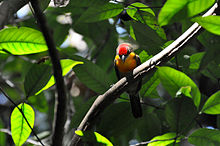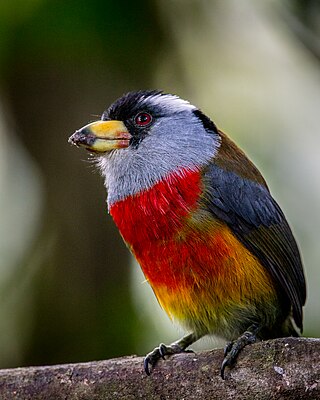
The toucan barbet is a barbet native to western Ecuador and Colombia. Along with the prong-billed barbet, it forms the family Semnornithidae, and is closely related to the toucans. It is a medium-sized barbet with a robust yellow bill. It has striking plumage, having a black head with grey throat and nape, red breast and upper belly, yellow lower belly and grey wings and tail.
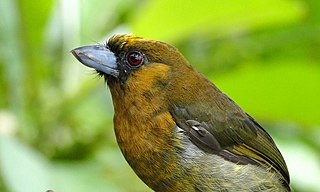
The prong-billed barbet is a distinctive, relatively large-billed bird native to humid highland forest of Costa Rica and western Panama.

The Choco toucan is a near-passerine bird in the family Ramphastidae, the toucans, toucanets, and aracaris. It is found in Colombia and Ecuador.

The ocellated woodcreeper is a species of bird in the subfamily Dendrocolaptinae of the ovenbird family Furnariidae. It is found in Bolivia, Brazil, Colombia, Ecuador, Peru, and Venezuela.

The brown-chested barbet, also called cinnamon-breasted barbet, is a species of bird in the family Capitonidae, the New World barbets. It is endemic to Brazil's central Amazon Basin.
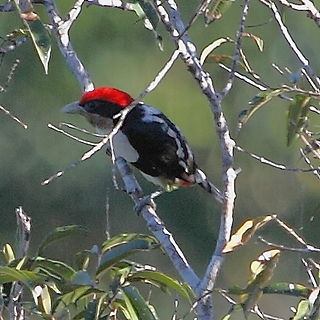
The black-girdled barbet is a species of bird in the family Capitonidae, the New World barbets. It is found in Brazil and Bolivia.

The white-mantled barbet is a species of bird in the family Capitonidae. It is endemic to Colombia.

The spot-crowned barbet is a species of bird in the family Capitonidae. It is found in Colombia and Panama.

The black-spotted barbet is a species of bird in the family Capitonidae, the New World barbets. It is found in Brazil, the Guianas, and Venezuela.

The five-colored barbet is a species of bird in the family Capitonidae, the New World barbets. It is found in Colombia and Ecuador.
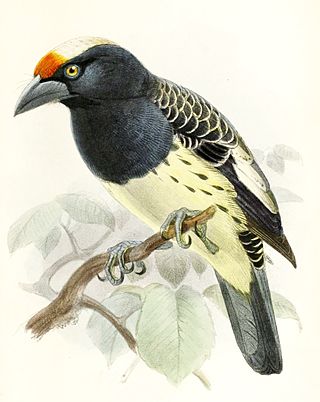
The orange-fronted barbet is a species of bird in the family Capitonidae. It is found Ecuador and Colombia.

The scarlet-banded barbet is a species of bird in the New World barbet family, Capitonidae. It is endemic to Peru.

The lemon-throated barbet is a species of bird in the New World barbet family Capitonidae. It is found in Bolivia, Brazil, Colombia, Ecuador, and Peru.

The versicolored barbet is a very colorful species of bird in the family Capitonidae, the New World barbets. It is found in Bolivia and Peru.
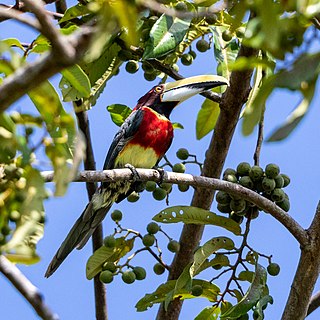
The red-necked aracari or red-necked araçari is a near-passerine bird in the toucan family Ramphastidae. It is found in Bolivia and Brazil.

The Sira barbet is a bird in the family Capitonidae, the New World barbets. It is endemic to the Cerros del Sira of east-central Peru.

The citron-throated toucan is a near-passerine bird in the family Ramphastidae, the toucans, toucanets, and aracaris. It is found in Colombia and Venezuela.

The black-throated toucanet is a near-passerine bird in the toucan family Ramphastidae. It is found in Bolivia, Brazil, Ecuador, and Peru.

Wagler's toucanet is a species of bird in the toucan family Ramphastidae. It is endemic to southwestern Mexico.
